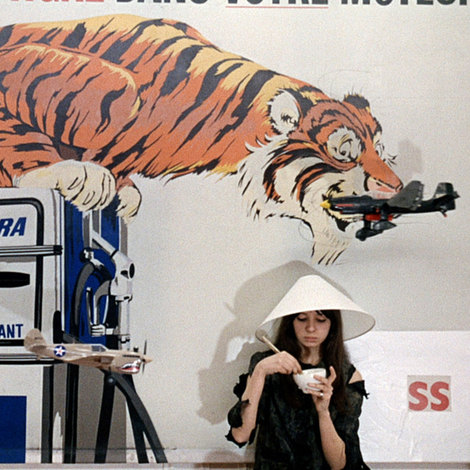Establishing shot: the house of Louis Bromfield, nestled beside a lake on the author’s thousand-acre Malabar Farm, in Ohio. A chyron gives us the date: May 21, 1945. The camera dollies in, under the portico and into the front parlor, sweeping past the assembled guests to a close-up of Humphrey Bogart, a white carnation in his lapel. Smash cut: Lauren Bacall, atop the grand staircase in a dress of rose beige. Eyes of bride and groom meet. The soundtrack swells with Lohengrin’s “Wedding March” as Bacall begins her descent. Fade to title: “The Legend of Bogie and Bacall.”
Every movie fan knows the story. Bogie and his Baby fell in love on the set of To Have and Have Not, at the same moment their characters fall in love, when Slim teaches Steve how to whistle. As far as Hollywood legends go, this one is more authentic than most. But the stories don’t tell us about the tension behind the smiles that day at Malabar Farm. The tears Bacall’s mother shed weren’t from happiness. The family was horrified by the marriage of their 20-year-old pride and joy to a thrice-divorced alcoholic more than double her age.

Missing that day were Bacall’s uncles Charlie Weinstein and Jack Bacall, father figures since her own father abandoned her as a child. Charlie and Jack had financially supported her, encouraged her dreams. When her first play closed before making it to Broadway, Charlie, a whimsical sort of fellow, sent a rhyme to console his niece: “Don’t be disheartened, you’ve only just started. I can see from afar, you will be a star.” But now, with the success of To Have and Have Not, she was a star, and Charlie was missing from her crowning moment. Bromfield’s secretary, George Hawkins, was the one to walk her down the stairs.
During the preceding months, Charlie had done his best to stop the marriage. He sent Bacall, always called Betty, a rhyme comparing her to Oona O’Neill, who’d just married the much older Charles Chaplin. “Young and beautiful in her prime / She wears a watch that can’t keep time / She marries a guy of fifty-four / Who must be a sexual bore / She marries a very brilliant mind / Which dazzled her into being blind.” The “topmost age” for a suitor of Betty’s, Charlie said, should be 30. “Don’t miss the lessons of this simple arithmetic,” he pleaded. “Remember, you need no one. You can travel the wide distance of life under your own steam.”
That’s remarkably modern advice, and it’s rare to find it being given to a woman in 1945, especially from a man. But it wasn’t a lesson she believed, nor was it one society embraced, so Betty accepted Bogie’s marriage proposal. Her mother reached “an armed truce” (Bacall’s words) with her future son-in-law, but her brothers were less willing to accept the inevitable. Weddings are important rituals in Jewish culture, so the absence of the bride’s closest male relatives would have been noticed. Bacall makes no mention of it in her memoir. What could she have possibly said that would have been believable?
Lauren Bacall’s family was horrified by the marriage of their 20-year-old pride and joy to a thrice-divorced alcoholic more than double her age.
Of course, we know how the marriage of Bogie and Bacall turned out: happily, for the most part. But here’s the thing: it might not have. Betty’s uncles could have been proven right, and they almost were. For the first several months of their marriage, Bogie continued the late nights out with his friends that his first three wives had had to endure. Betty mostly stayed home with Droopy, the devoted cocker spaniel who’d been with her since her early teens. One night, Droopy was hit and killed by a car while out for a walk. Betty was devastated. “I burst into a flood of tears,” she remembered. “Where was Bogie? I needed him!”
It was late when he finally called home. He was “crocked,” Betty wrote in her memoir. Even when she tearfully told him about Droopy, his high spirits did not dim. He insisted she join him at a restaurant. Needing to be with him in her grief, she obeyed, but got no sympathy from anyone, let alone her husband. “Bogie [was] drunker than I’d ever seen him,” Bacall wrote. “It was a night to forget.”
Except that she didn’t forget. Droopy was gone—much like the girl Betty had been. From that moment on, she knew things would have to change.

But change wasn’t going to be easy. Bogie had very specific notions about a wife’s place. The ideal wife, he told Betty, should be small enough to fit into his pocket, so that when he was in the mood to see her, he could put her in the palm of his hand and allow her to speak, but when she began to go too far, back into the pocket she would go. In 1966, when Betty told the story as part of her introduction to the first official Bogart biography, she called Bogie’s fantasy “infuriating” but also “enchanting.” A decade later, when retelling the story in her own memoir, she dropped the “enchanting” and admitted, “There were times when I would have liked to do the same thing to him.”
Things eventually balanced out. Bogie got older and became less likely to go out carousing. Bacall found her own friendships and made her own contacts. But it was also their shared political beliefs. For their historic trip to Washington, in 1947, to speak against the House Un-American Activities Committee, Bacall led the charge every bit as much as Bogart.
The actress Evelyn Keyes, who went with them, observed an evenly matched partnership. “We’re not talking about love,” Keyes said. “That’s not an issue.” Just as important, Keyes said, was the fact that the couple “respected each other, watched out for each other.” Bacall was surprisingly eloquent in her statements to the press about their cause. Watching her, Bogie saw the fantasy of his pocket wife crumble. Politics seem to have recalibrated their relationship.

“As long as she wishes to go on with her career,” Bogie told reporters, “it’s the better part of valor”—which surely stunned his first three wives. “I wouldn’t know what to do with a wife who didn’t work, who sat around at luncheons.”
Humphrey Bogart and Lauren Bacall have become Hollywood archetypes for true love, fateful couplings, happy endings. The legend often makes their story into a fairy tale. But the truth is always more satisfying than any myth.
Fade out on a final clinch between an older, wiser Bogie and Bacall. Even Uncles Charlie and Jack came around. The end.

William J. Mann is the author of several books, including Tinseltown: Murder, Morphine, and Madness at the Dawn of Hollywood. His latest, Bogie & Bacall: The Surprising True Story of Hollywood’s Greatest Love Affair, is out now from Harper


